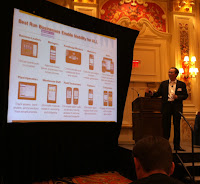This is my first edition of Enterprise Mobility Asia. Asia is predicted to be the fastest area of growth for enterprise mobility between now and 2016, so it seemed like a prudent time to start reporting on this growth on a weekly basis. If your company would like to be a sponsor of this weekly newsletter, please
email me.
China Telecom Corp Launches in UK and has Plans for France and Germany
China Telecom plans to launch mobile services in the UK during the first Quarter and they are looking at also expanding to France and Germany to help drive overseas growth.
Read Original Content
GlobalOne announces Mobile Cloud Services
GlobalOne announced a new practice, GlobalOne Mobility, which will offer professional services for building, deploying and maintaining mobile cloud apps for both consumer and enterprise environments. The new group will help clients build a vision and roadmap for mobile enterprise apps, and mobile social enterprise apps, and then develop and deploy them in cloud environments.
Read Original Content
Galaxy Tabs in the Indian Educational Market
Samsung has unveiled its
smart solution for the educational market. This solution includes customized software applications on its Galaxy Tabs. Samsung is targeting 20,000-plus education institutes in India.
Read Original Content
Mobile Payments in the Indian Market
Some projections have mobile payments replacing credit and debit cards and hard currency as the primary mediums of monetary exchange over the next five years. However, in a country like India, where the masses don’t use relatively expensive smartphones, the concept of mobile apps will not work. Nokia, the manufacturer of some of the most widely used mobile phones in India, is seeking to address this under served market with its recently launched mobile payment service, Nokia Money.
Read Original Content
Starbucks Uses Mobile HTML5 Ads in China
Mobile ads were placed in three mobile apps for a Starbucks Christmas promotion in China. Starbucks rewarded customers with a bigger size of drink for their social check-ins at over 200 Starbucks stores across Shanghai, Jiansu and Zhejing provinces.
Read Original Content

Research Firm Predicts Asia-Pacific Lead in Enterprise Mobility Growth
Global market research and consulting company, MarketsandMarkets, predicts that the growing acceptance of enterprise mobility by large, small and medium businesses, plus the introduction of sophisticated mobile devices and solutions will fuel growth in the Asia-Pacific markets. The Asia-Pacific market is predicted to lead the world in enterprise mobility
growth rate.
Read Original Content
Preludesys India files for IPO to Accelerate Development of Enterprise Mobility Solution
Preludesys India, has filed documents in preparation for an IPO. They intend to use the proceeds for setting up a global delivery center, paying back loans, opening 8 branches across USA and Asia Pacific regions and accelerating the development and go to market efforts of their enterprise mobility solutions.
Read Original Content
The Role of Mobile Technology in mHealth in International Development
mHealth is making a difference around the world and especially in Asia. In Afghanistan, health workers are receiving training via SMS. In South Africa, Project Masiluleke sends text messages with important information about HIV. In South Asia pregnant women are receiving important maternal health information also via text messages. In Cambodia, a solution called
FrontlineSMS, allows health workers in Cambodia to report cases of malaria in real time using a text messaging system that sends texts between groups of people and online mapping systems like Google Earth.
Read Original Content
DoCoMo and Chip Makers Join in Smartphone Venture
Demand for mobile devices is expanding rapidly, and as a result, a group of Asian electronics companies are teaming up with Japanese mobile carrier NTT DoCoMo Inc. to develop semiconductors used in smartphones.
Read Original Content
*************************************************************
Kevin Benedict, Independent Mobile Industry Analyst, Consultant and SAP Mentor Volunteer
Follow me on Twitter @krbenedict
Full Disclosure: I am an independent mobility analyst, consultant and blogger. I work with and have worked with many of the companies mentioned in my articles.






































